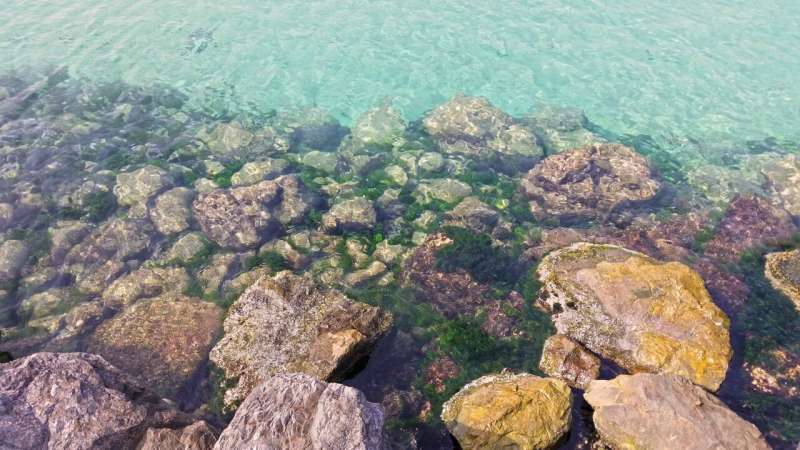
Credit: Unsplash/CC0 Public Domain
The atmosphere, the ocean and life on Earth have interacted over the past 500-plus million years in ways that improved conditions for early organisms to thrive. Now, an interdisciplinary team of scientists has produced a perspective article on this co-evolutionary history, published in National Science Review.
“One of our tasks was to summarize the most important discoveries about carbon dioxide and oxygen in the atmosphere and ocean over the past 500 million years,” says Syracuse University geochemistry professor Zunli Lu, lead author on the paper. “We reviewed how those physical changes affected the evolution of life in the ocean. But it’s a two-way street. The evolution of life also impacted the chemical environment. It is not a trivial task to understand how to build a habitable Earth over long time scales.”
The team from Syracuse University, Oxford University and Stanford University explored the intricate feedbacks among ancient life forms, including plants and animals, and the chemical environment in the current Phanerozoic Eon, which began approximately 540 million years ago.
At the start of the Phanerozoic, carbon dioxide levels in the atmosphere were high, and oxygen levels were low. Such a condition would be difficult for many modern organisms to thrive. But ocean algae changed that. They absorbed carbon dioxide from the atmosphere, locked it into organic matter and produced oxygen through photosynthesis.
The ability of animals to live in an ocean environment was affected by oxygen levels. Lu is studying where and when ocean oxygen levels may have risen or fallen during the Phanerozoic using geochemical proxies and model simulations. Co-author Jonathan Payne, professor of Earth and planetary sciences at Stanford University, compares an ancient animal’s estimated metabolic requirements to places where it survived or disappeared in the fossil record.
As photosynthetic algae removed atmospheric carbon into sedimentary rocks to lower carbon dioxide and raise oxygen levels, the algae’s enzymes became less efficient in fixing carbon. Therefore, algae had to create more complicated ways of doing photosynthesis at lower carbon dioxide and higher oxygen levels, and accomplished this by creating internal compartments for photosynthesis with control over the chemistry.
“For algae, it is changes in the environmental ratio of O2/CO2 that seem to be key to driving improved photosynthetic efficiency,” says co-author Rosalind Rickaby, who is a professor of geology at Oxford. “What is really intriguing is that these improvements in photosynthetic efficiency may have expanded the chemical envelope of habitability for many forms of life.”
Ancient photosynthesizers had to adapt to changes in the physical environment that they themselves had created, notes Lu. “The first part of the history of the Phanerozoic is increasing habitability for life, and then the second part is adaptation.”
If scientists want to further understand this interplay between life and the physical environment, as well as the drivers and limits on habitability, the authors suggest that mapping out the spatial patterns of ocean oxygen, biomarkers for photosynthesis and metabolic tolerance of animals shown in fossil records will be a key future research direction.
More information:
Zunli Lu et al, Phanerozoic co-evolution of O2-CO2 and ocean habitability, National Science Review (2024). DOI: 10.1093/nsr/nwae099
Citation:
Scientists untangle interactions between the Earth’s early life forms and the environment over 500 million years (2024, July 29)
retrieved 30 July 2024
from https://phys.org/news/2024-07-scientists-untangle-interactions-earth-early.html
This document is subject to copyright. Apart from any fair dealing for the purpose of private study or research, no
part may be reproduced without the written permission. The content is provided for information purposes only.
>>> Read full article>>>
Copyright for syndicated content belongs to the linked Source : Phys.org – https://phys.org/news/2024-07-scientists-untangle-interactions-earth-early.html































